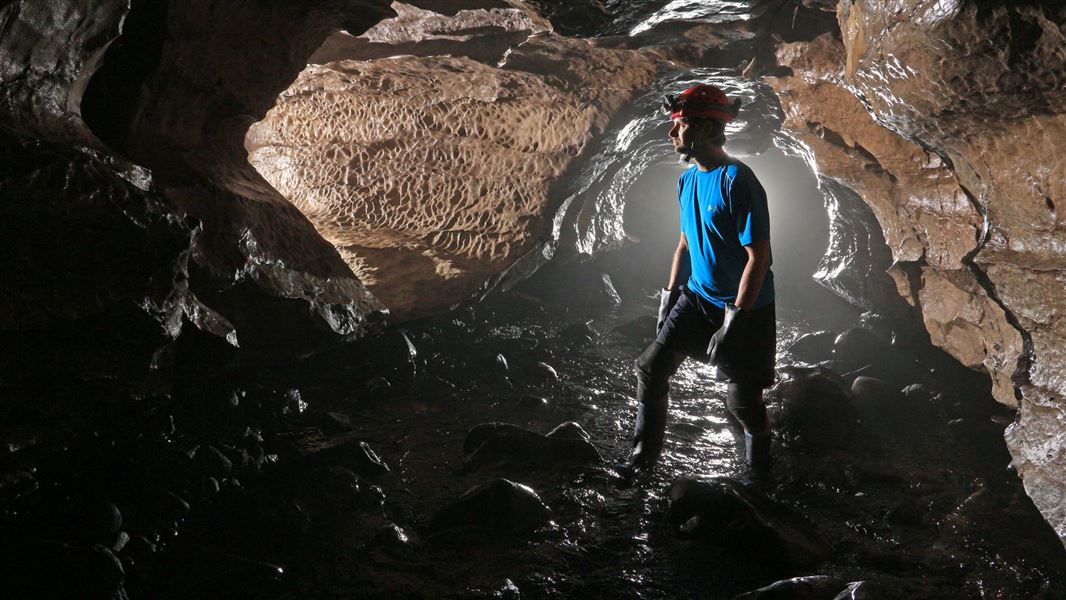Image gallery
The caves are unmarked and are not recommended for inexperienced cavers. There is significant risk of slips, encountering confined spaces and flash flooding.
From Waimarino (formerly National Park Village), travel on SH47 towards the volcanoes for approximately 20 km. Turn into John McDonald Road. Veer left at the Pukehinau Road intersection toward Pokaka Mill Campsite. The caves are approximately 7.5 km from the SH47 turnoff. The road is unsealed. A 4WD is strongly recommended.
Be aware of the hazards before entering the caves
Heavy rainfall may risk rising water levels in the caves. The route is a flooding risk during periods of high rain and has ongoing flash flood risk.
This environment features rock formations and running steams, and as such there is a constant risk of slick rock and slipping hazards.
The caves are unmarked, it is recommended you only access the caves with an experienced person to reduce risk of getting lost.
Leave your intentions with a trusted person
There is no cell phone reception within the caves, plan ahead before accessing this underground track and ensure people know where to find you should you encounter difficulty.
Access by 4WD
4WD is recommended for access, however Pukehinau Road is not recommended for recreational 4WD activities. Recreational 4WD activities are only permitted in Tongariro Forest Conservation Area on the 42 Traverse Track during the 4WD season – 1 December to 30 April.
Glow worms and cave weta live within the cave system.
The forest today is regenerating podocarp hardwood forest, still recovering from heavy milling in the twenty years between 1942 and 1961 where the kahikatea was used to make butter boxes and the matai and rimu for construction material.
Stay safe in the outdoors
- Choose the right trip for you. Learn about the route and make sure you have the skills for it.
- Understand the weather. Check weather forecasts.
- Pack warm clothes and extra food. Check gear lists.
- Share your plans and take ways to get help. Leave your intentions with a trusted contact and take a distress beacon.
- Take care of yourself and each other.
Check, Clean, Dry
Clean all gear when moving between waterways to prevent the spread of didymo and other freshwater pests.
Tongariro National Park Visitor Centre
| Phone: | +64 7 892 3729 |
| Email: | tongarirovc@doc.govt.nz |
| Address: | Whakapapa Village State Highway 48 Mount Ruapehu 3951 |
| Hours: | Visitor centre hours and services |
